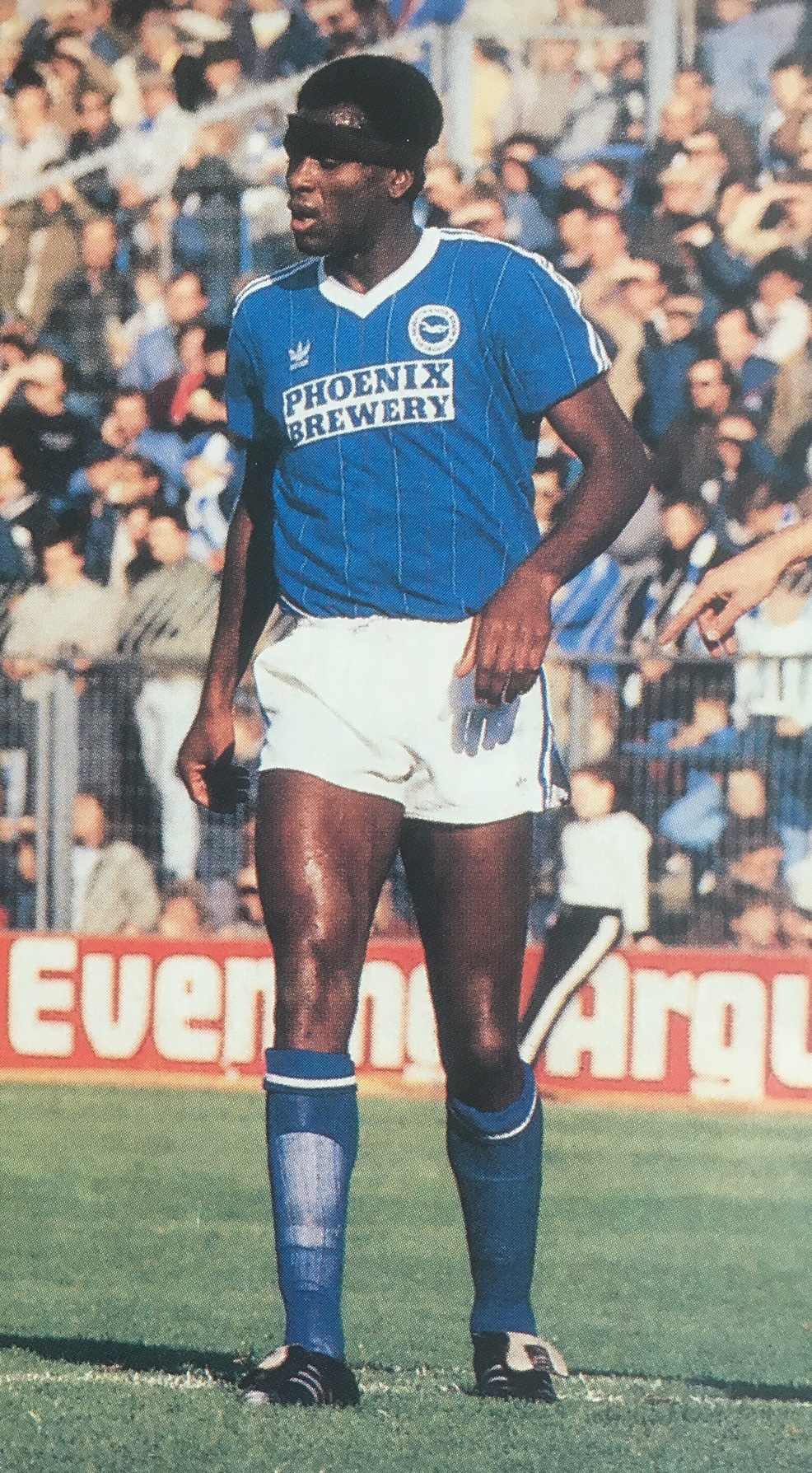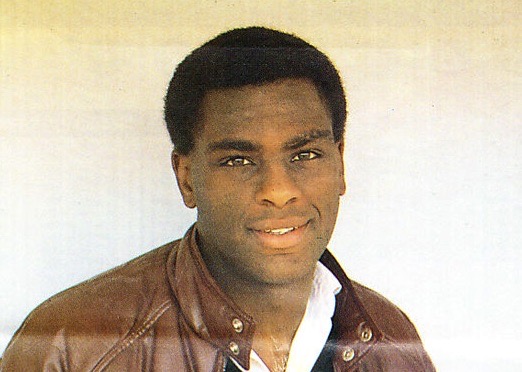 ERIC YOUNG went on to have a lengthy career as a dominant centre back, and even made it onto the international stage, although he never really looked like achieving such heights in five years at the Albion.
ERIC YOUNG went on to have a lengthy career as a dominant centre back, and even made it onto the international stage, although he never really looked like achieving such heights in five years at the Albion.
His performances for Isthmian League side Slough Town between 1979 and 1982 drew the attention of plenty of league scouts – he played 144 games and scored an impressive 23 goals.
Albion manager Mike Bailey signed him from Slough in 1982 but he didn’t break through into the first team until the start of the 1983-84 season, making his full debut away to Blackburn Rovers in September 1983.
He took over Steve Foster’s number 5 shirt for 10 games and, although he subsequently had a spell playing alongside Foster, it’s clear he was viewed as his long-term replacement.
Relations between manager Chris Cattlin and Foster were strained and he eventually sold the iconic club captain to Aston Villa in March.
In the same month, Young scored his first goal in a 3-0 home win over Leeds United. In an eventful first season, he completed 35 games, scored twice and was sent off.
It was the experienced Jimmy Case who Young appreciated most in those early days. He told the matchday programme: “All the lads were great but Jimmy Case really helped me to settle down. Jimmy is very subtle. He’ll just say a few words to you and it makes all the difference. I appreciated that in those early days.”
In Cattlin’s first full season in charge, 1984-85, Young consolidated his place in the back four, missing only a handful of games as he completed 39 league and cup appearances.
Young’s centre back partner more often than not was Gary O’Reilly, who also ended up going to Crystal Palace, before returning to Brighton for a second spell.
In that 1984-85 season, though, when the pairing was in its fledgling stages, Cattlin admitted he played Graham Pearce in between them “to allow the central defensive pair to learn their trade and settle down into a partnership”.
There must be something about Albion playing Newcastle in the FA Cup; in the 1985-86 season, Young scored in the first minute of the third round match at St James’ Park against a Magpies side that included Peter Beardsley and Paul Gascoigne. With Perry Digweed performing heroics in goal, the Seagulls won the tie 2-0 with a late goal from Dean Saunders.
Young was virtually ever present that season, playing 42 games in total.
In a 1-0 away win at Sheffield United in 1986 which I went to watch with @SnowyywonS, Young put in a sterling performance at the back.
Although he was booked for a challenge on Peter Beagrie, he had such a fine old tussle with that veteran striker Peter Withe that when the ex-Villa and Forest man was substituted 20 minutes from the end, Withe stopped to shake Young’s hand before leaving the pitch.
By then Young was playing under yet another manager; Alan Mullery having returned for what turned out to be only an eight-month spell.
 With Albion finishing rock bottom of Division 2 in 1987, new manager Barry Lloyd was forced into a fire sale of the highest assets and Young went to Wimbledon for £70,000 (Danny Wilson and Terry Connor were also sold). Young had made a total of 147 league and cup appearances.
With Albion finishing rock bottom of Division 2 in 1987, new manager Barry Lloyd was forced into a fire sale of the highest assets and Young went to Wimbledon for £70,000 (Danny Wilson and Terry Connor were also sold). Young had made a total of 147 league and cup appearances.
Although he missed out on Albion’s run through to the 1983 FA Cup Final, Young went one better by being part of Wimbledon’s winning team in 1988 as they beat Liverpool 1-0.
His central defensive partnership with Andy Thorn was highly effective but after 99 appearances for the Dons, he was sold to Crystal Palace for £850,000, where he subsequently resumed his partnership with Thorn.
He was at Palace for five years, making 204 appearances. After a falling-out with Palace manager Alan Smith, he joined Wolves on a free transfer where he played 31 games over two seasons.
Following a brief return to Palace, when he didn’t return to first team action, he returned to his non-league roots and spent four seasons at Egham Town before retiring at the age of 41 in 2001.
Born in Singapore on 25 March 1960, because of his British citizenship Young was able to choose which home country to play for. He chose Wales, not making his debut until the comparatively late age of 30, but going on to earn 21 caps. All but his first and last caps came during his time with Palace.
Young attributed his introduction to the world of football to a former schoolteacher in Staines. “His name was Dennis Richards and he helped me a lot,” he said. “He was into football and, if anybody showed promise, he did all he could for them. He gave me a great deal of encouragement.”
A number of clubs showed interest in the young Young when he left school but he insisted on completing a college course before turning professional. He qualified as an accountant and that’s the job he took on after his playing days had ended, working with a Heathrow-based construction company.
Eric Young was often a subject for the Albion matchday programme front cover. Black and white shots show him in action and, after his move to Wimbledon, a FA Cup winner alongside goalscorer Lawrie Sanchez and goalkeeper Dave Beasant.





9 thoughts on “Eric Young went from non league to the international stage via Brighton and Crystal Palace”